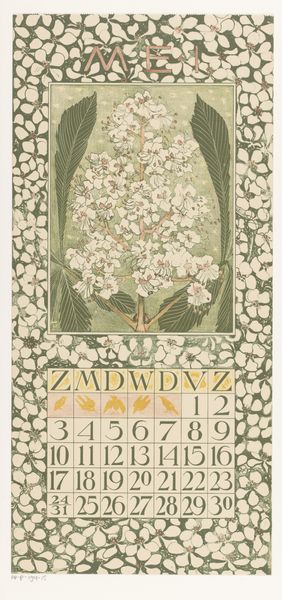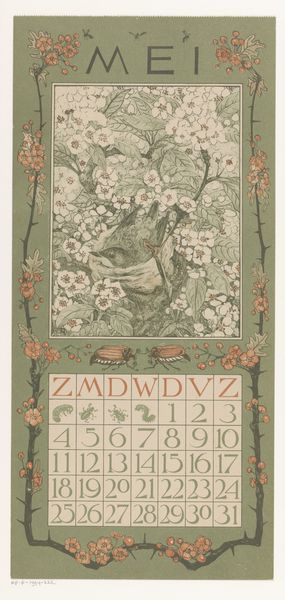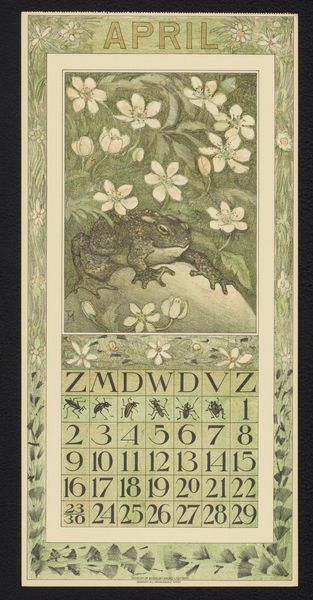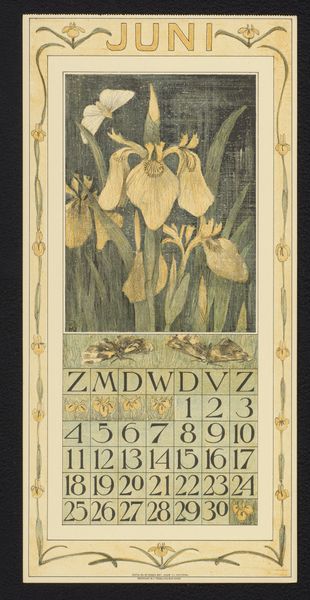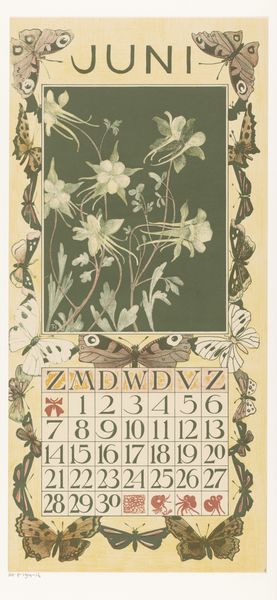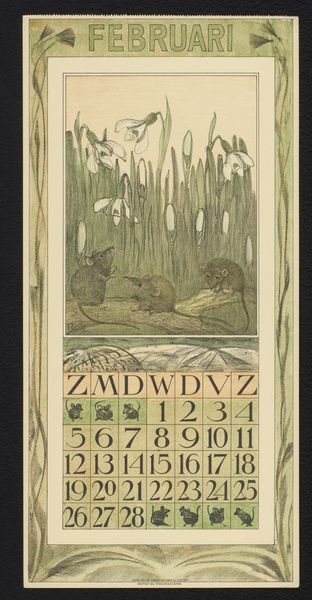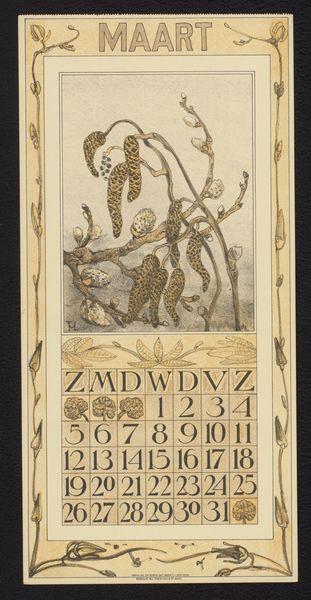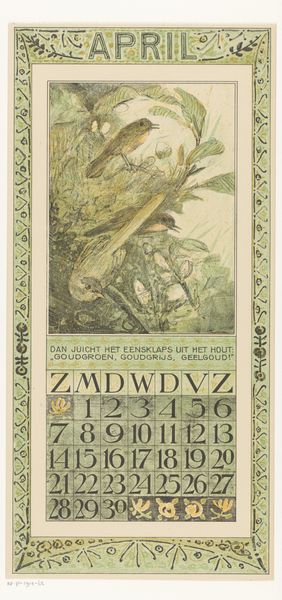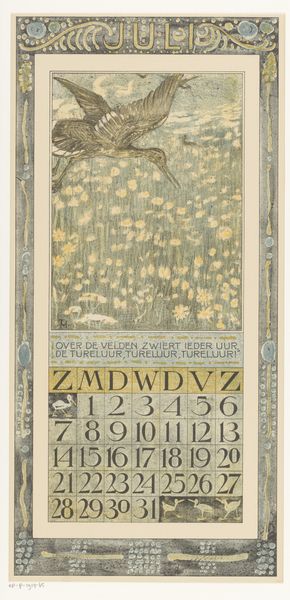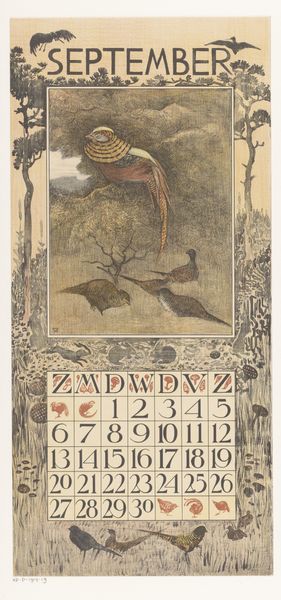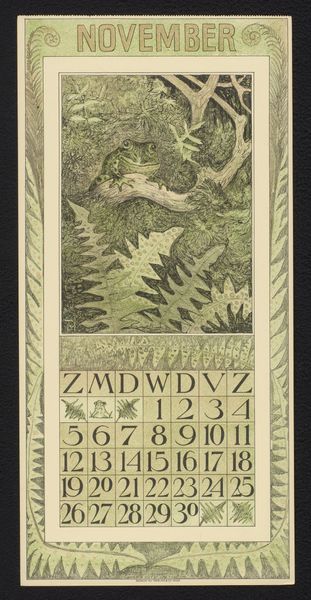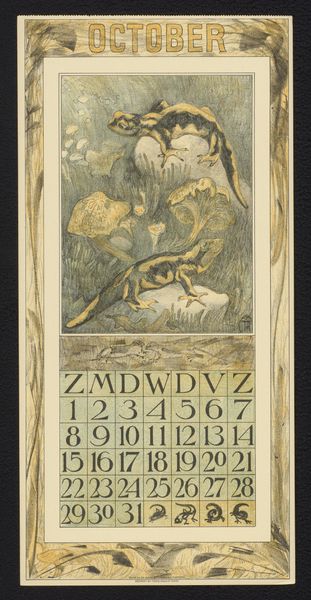
drawing, tempera, print
#
drawing
#
art-nouveau
#
tempera
# print
#
landscape
#
flower
Dimensions: height 439 mm, width 212 mm
Copyright: Rijks Museum: Open Domain
Curator: Here we have Theo van Hoytema’s "Kalenderblad voor augustus 1911 met een hagedis en dopheide," or Calendar Page for August 1911 with a Lizard and Heather, created in 1910. Editor: It has a certain whimsical feel to it. The muted palette creates a calming, almost ethereal scene. It seems to glow. The print is intricate; the design has lots of organic lines, floral details, and of course, the lizard. Curator: It is an interesting work for this Dutch artist, as his lithographs and drawings like this were used not just as decoration, but served a social function, telling the time of the month and showcasing native species. It speaks to a growing awareness in Dutch society about local nature and a move towards conservation efforts. Editor: True, it's certainly functional art. But what I appreciate most is the use of tempera combined with printmaking, which results in an unusually textured surface for this type of work. Also, see how the Art Nouveau styling emphasizes flowing lines and the idealized depiction of nature? It adds to the piece's decorative, aesthetic value, and contributes to its overall beauty. Curator: But how does the calendar format itself influence our perception? The rigid grid juxtaposes the wildness of the lizard and flowers, creating a dialogue between the structured timekeeping and the freedom of nature. Van Hoytema was actively interested in promoting land use that incorporated native animal habitats and was very passionate about using local nature in his images. Editor: Yes, it's an interesting dichotomy, definitely. I’d also say the subtle use of colour – those soft pinks and greens – they draw the eye, adding layers to the composition and emphasizing the peacefulness of the scene. Curator: Knowing about Van Hoytema’s socialist politics and his commitment to nature really influences how I look at this image and his intentions. What’s not always apparent today is just how socially radical his work and vision were for his time! Editor: For me, getting lost in the visual aspects gives it an enduring quality, inviting quiet contemplation with a close-up observation of its patterns, shapes, and textures. Curator: Looking at the function of this work in its original time, it speaks to the rising awareness of conservation amongst a population who may never have experienced nature. Editor: Absolutely, and analyzing it through the lens of formalist theory reveals a beautiful intersection of utility and design, function and beauty.
Comments
No comments
Be the first to comment and join the conversation on the ultimate creative platform.
